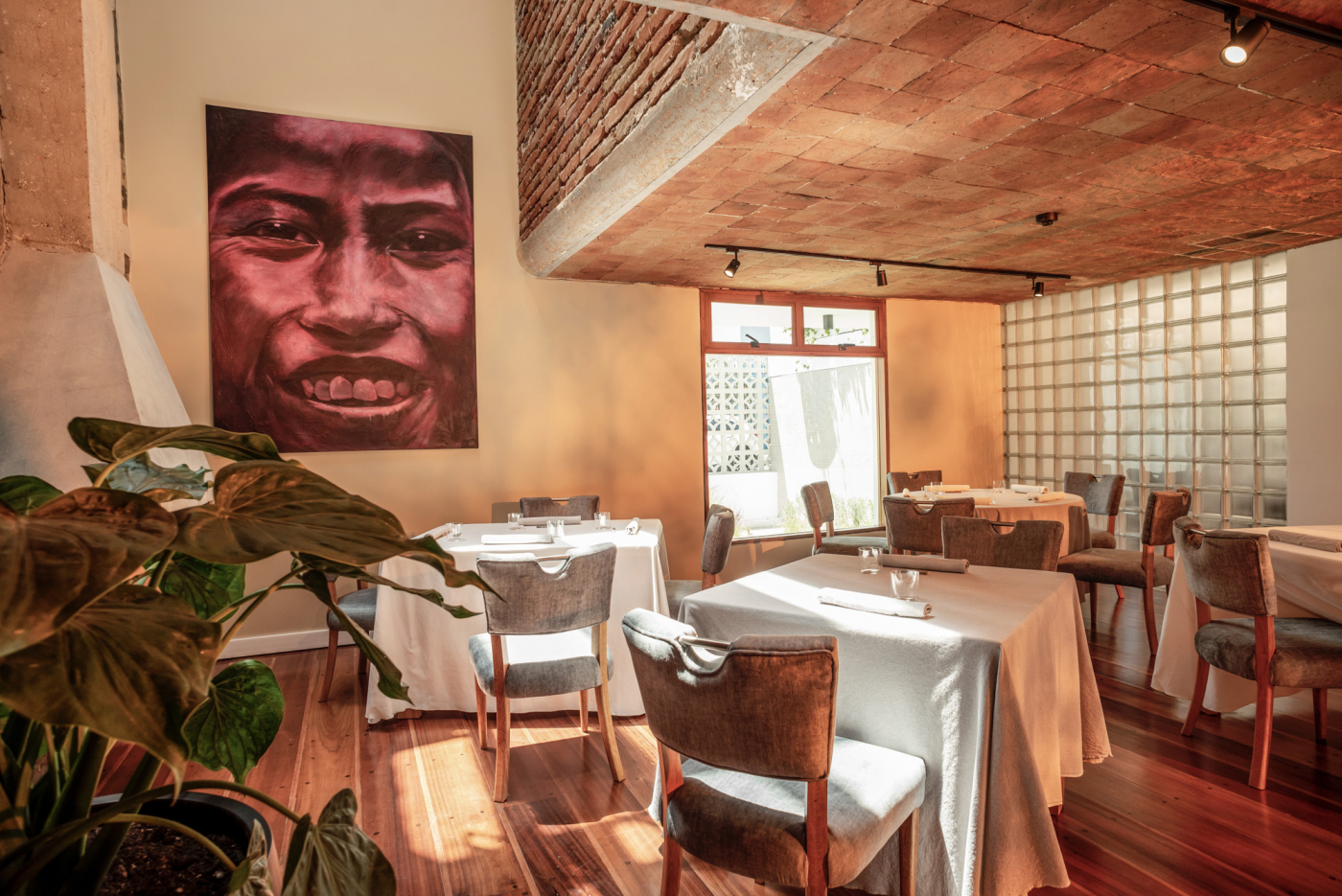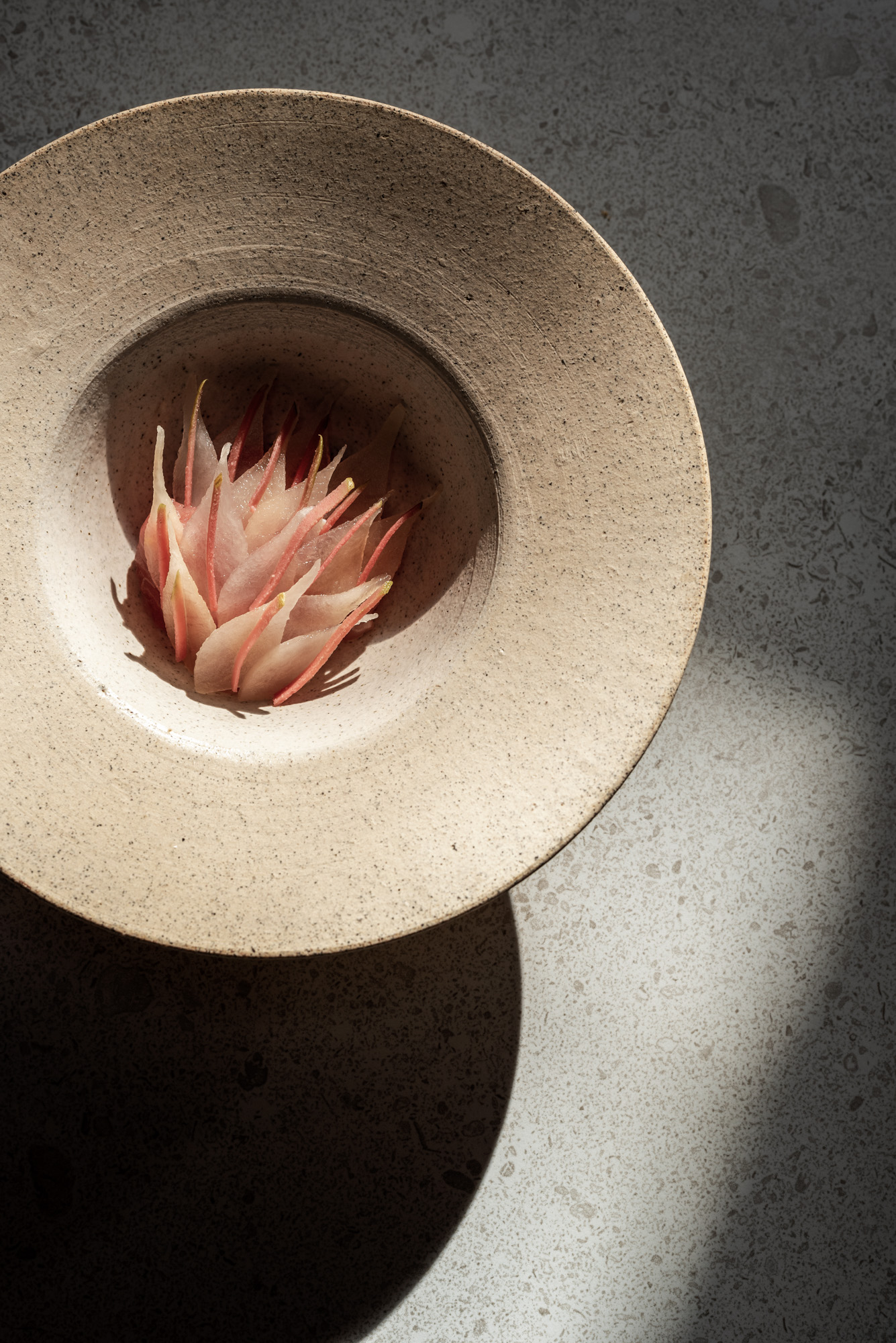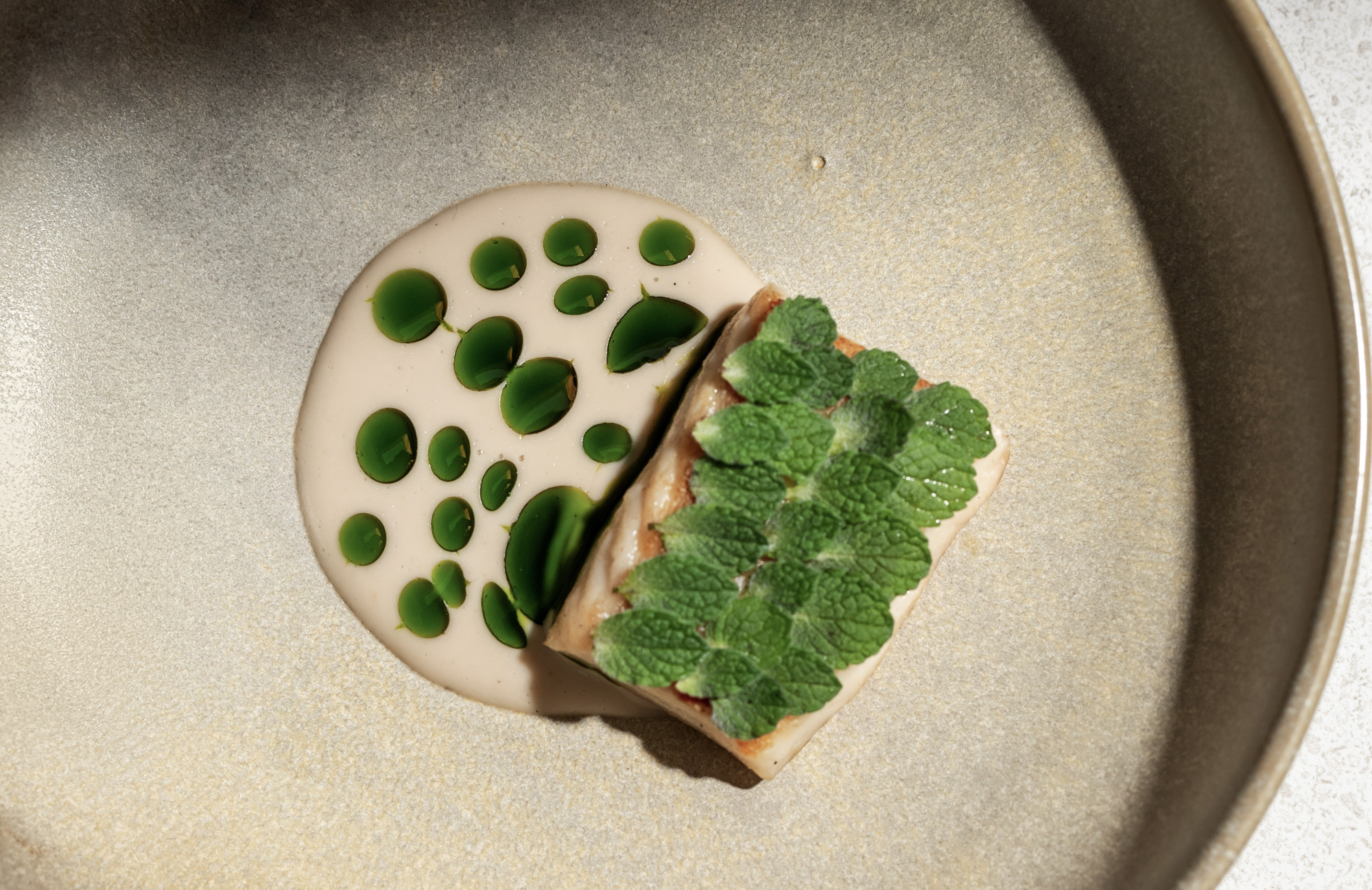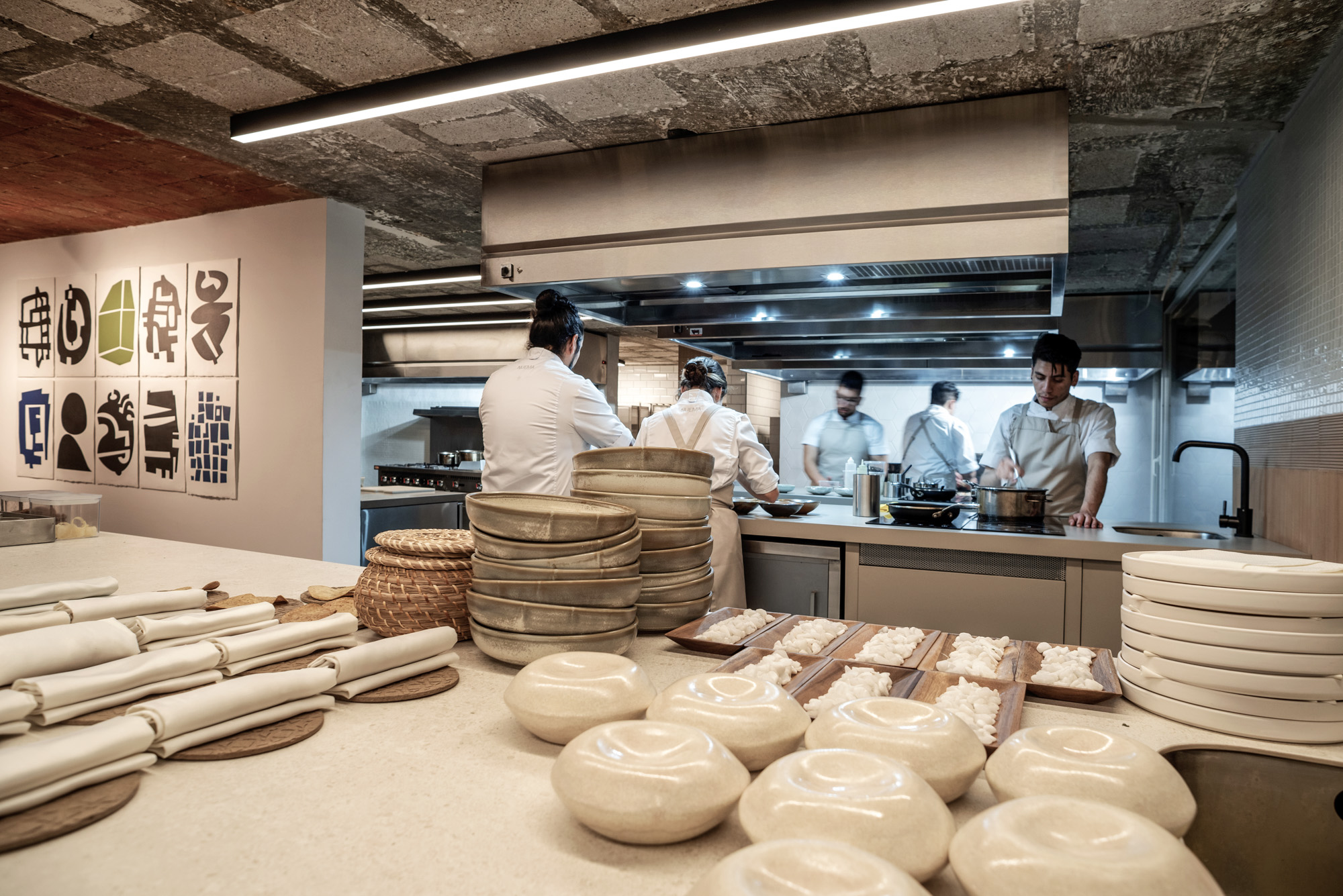
Nuema, Quito | Where does Ecuador fit?
Finding himself unexpectedly stationed in Ecuador, David J Constable establishes a new friendship with the country’s best restaurant

Finding himself unexpectedly stationed in Ecuador, David J Constable establishes a new friendship with the country’s best restaurant

Many of the meals in our lives are planned, booked weeks or months in advance. Some will be celebratory or commemorative, although most pass us by without comment. While I do not remember every Pot Noodle or tuna sandwich at my desk, I do fondly recall many others: my eighth birthday at a Maidstone McDonald’s, my tenth at Planet Hollywood and my eighteenth with my parents for a more linen napery experience at Chilston Park. There was a memorable Valentine’s Day at Skies in Kansas City, the entire 42nd restaurant floor a giant rotating disc, and I remember like a giddy nostalgic echo, my first proper, authentic introduction to ramen in Tokyo. And that first bite of Jay Fai’s famous crab omelette in Bangkok. And the oysters in Port Lincoln, Australia. Then there’s Noma. My meal at Nuema, however, was neither planned nor expected. I didn’t even know that I would be in Ecuador.
Nuema was the first Ecuadorian restaurant to land on Latin America’s 50 Best Restaurants list, entering at number 48 in 2020. History-making stuff
I departed London for Lima, via Amsterdam. It was a Saturday morning, and the quick dash layover was only two hours, allowing enough time for a few Heinekens. I left the UK at 8am and would arrive in Peru for dinner. That was four days ago. A LATAM Airlines jet collided with a fire truck on the runway as it was taking off from the airport in Lima, killing two firefighters. Naturally, the airport was closed, and all flights were grounded. A backlog formed and after three days in Amsterdam, I finally boarded a night-time flight to Madrid and then 10 hours later a flight to Quito, for 12 hours, before boarding a flight to Lima, and arriving 96 hours later than scheduled.
Turning to social media to air my frustrations, friends reached out. The best type of friends – chef friends. I heard from Joris Bijdendijk in Amsterdam and ate at his Wils and RIJKS restaurants and in Madrid I had dinner at Rodolfo Guzman’s Boragó pop-up. And then, because word had spread of my predicament and the global food community support one another in this hospitality chain of buddy camaraderie, I landed in Quito and switched on my phone to a message from Alejandro Chamorro. Alejandro, with his wife, Pia Salazar, is chef-patron of Nuema restaurant, informed me that he would collect me from the airport and give me a tour of the city for the few hours I would be stationed there. We had never met or spoken but what a relief to be able to lean on a local’s knowledge and not have to compete with the crooked cabbies and the Spanglish comprehension of bus timetables.
Nuema was the first Ecuadorian restaurant to land on Latin America’s 50 Best Restaurants list, entering at number 48 in 2020. History-making stuff. The name is an amalgamation of their three children: Nuria, Emilio and Martin. This year, they blazed up the list to number 24 as well as Pia being awarded Latin America’s Best Pastry Chef. A good year all around, you might say. If I were going to spend time with anyone in Quito, a city I know nothing about, then I could not do better than Alejandro and Pia.

Nuema
Spat from the traffic-choked Pan-American Highway, which connects Mariscal Sucre Airport to Quito’s Old Town – the stasis of thousands going nowhere – we paused first for coffee at FANKØR, a speciality coffee shop where their Pacamara java slapped me in the chops, screaming at me to get a grip. And this was only a small cup. I had forgotten how good coffee is in this part of the world. Turkish, Greek, Italian and American coffee just doesn’t compare because, well, it isn’t very good, the burnt beans and thick grit like a scalding sludge – you could stand a spoon up in that stuff. I bolted down another, helped on its way by a cardamom bun and we drove to the food market.
Inside Mercado Iñaquito, legions of vendors and florid, fruity peddlers clambered over themselves for my custom, circling me out; the curious gringo with a wallet. I passed counters of spuds and leeks, onions, pepino, carrots, beets, taxo, jicama, pitahaya, guavas and Amazonian fruit juices, the sweet and consuming smell of pulpy fruit and veg. The diversity is incredible. And then next door to the food court for the chicken, tomato and naranjilla stew, seco de pollo, and maiz en la mazorca, a heavily buttered cornhusk, grilled until almost popping from a minute charcoal fire. There isn’t a fruit or a vegetable or a plant, which epitomises Latin America more than corn. Well, I suppose there is the coca plant, its leaves stripped to produce cocaine, but even coke is mixed with corn-starch these days, or so I am told. Corn is the biggest of the edible grasses and is brilliantly versatile. Biting into my hot husk, molten butter oozed out. It was a steamy delight as I used my fingers to turn and twist the husk to reveal more kernels; all of the nibbling and biting and sucking and slurping, the persistent licking of steamy, runny butter. I didn’t want to waste a drop.

Nuema
I adore this sort of grubby street eating. The stews and the corn. A quite ridiculous amount of roasted and barbecued pork. More fruit and veg than you could eat in a lifetime. South America and Southeast Asia bookend Europe, brushing up against our fruity mundanity with their bulging cornucopias of majestic choice. Frankly, Europe is an embarrassment. We eat fruit because we are told to and not because it is plentiful, and we find it genuinely exciting and delicious. Ask any British kid their favourite fruit, and they’ll struggle to answer you through their crisp and chocolate-chomping gob.
I have been trying to gain a better understanding of Latin American cuisine and cooking ever since I first visited Brazil in 2013. Visiting the markets helps. They are the foundational certainty of a country with an unfakeable insight into what is bought and sold, produced and traded. I have also spoken to locals and chefs and read The Latin American Cookbook by Virgilio Martinez. But Latin America comprises some 20 countries across 7,765,077 square miles, stretching from Mexico to Tierra del Fuego and much of the Caribbean, too. According to the website Worldometer, the population of Latin America and the Caribbean is 669,575,148, which means a lot of cooking and recipes, a lot of input, impact and variation. So where does Ecuador fit in this vast cultural microcosm and within the edible landscape of Latin America? I only had 12 hours to find out, and three of those were spent in traffic.
Needing to be at the airport for 6pm and given the highway congestion, I slipped in a post-lunch, pre-dinner meal at Nuema. Just the seven courses, plus wine. And water, brilliant sparkling water. I don’t know how to explain it, but the local fizz just tastes sharper, cleaner, fizzier, better. Seated alone, my table was opposite the open kitchen where Alejandro and Pia glided from station to station, studying plates and small, mounted canapés of white crab meat and oyster. A dusting of fine powder was applied to the crab to add new depth and flavour. It was a blind tasting; the menu only being presented at the end of my meal. This meant that I was left to guess many of the ingredients and constructs, a few of which I recognised from the market. There was naranjilla, the small fruit that translates as a small orange. Across South America, it is known by various names and spellings, including lulo, obando and nuqui. And there was a plummy sea bass ceviche with creeping achiote ground spice; a popular spice in these parts and throughout the Americas and the Caribbean, commercially used to add colour to chorizo, butter and smoked fish.

Nuema
Other small bites melded further native ingredients, scavenged from the hidden corners of the Amazon rainforest to the Pacific shore and lofty altitude valleys and Ecuadorian flatlands. There was black garlic called ajo negro, purple corn called maiz morado and other Andean crops, cultivated from up in the heady mountain ranges, and fruits and flowers such as pitaya and guanabana from the tropical regions, sourced from the likes of the Mercado Iñaquito Market and leaves from the red oxalis plant. A corn dish was served with raw crayfish from the Galapagos in a prawn bisque and was the standout course; creamy and corny, obviously, with tiny, pickled vegetables to liven. And the belly of an Amazonian fish was served plump and fatty, similar to cod’s cheeks with the same firm but gelatinous texture. On top were small mint leaves and flaked salt.
Wine appeared throughout, mostly dry whites and fruity reds. And they stock a variety of local natural wines, too. A glass of Chilean Lapostolle Cabernet Sauvignon 2017 early on is a stonker, and the Hungarian sweet wine Tokaj Kvaszinger is another highlight late on, which is saying a lot, because usually I hate sweet wines. I also tried a few of the locally concocted juices, squeezed from Amazonian fruits and veg, so that I wouldn’t board my flight completely spazzled. All were zingy blends of native fruits and kombuchas.
Desserts can often be the disappointing curtain call of a long meal with some warm, dribbly, over-priced chocolate creation; however, they arrived here reassuringly brilliant and were an exciting continuation of gathered Ecuadorian postcode produce. Again, all manner of new things were there for me to examine and keep me guessing, from Latin America’s recently anointed Best Pastry Chef. Pia combined shavings of coconut with algae, black garlic and yeast for a cooling bowl that promoted more questions than answers. The algae are treated as a protein and are dried and then cooked low with the fatty rind of the coconut flesh. It is then preserved in coconut oil and water until it needs to be served; at which point, it is placed upon a sabayon base (egg yolks, sugar and sweet wine) with a black garlic paste, candied yeast and any remaining parts of the coconut made into a crumble and granita. Once again, it is an acute texture coupling, highlighting providence with the slippy, fatty texture of the coconut and the sweet, molasses-like flavour of the garlic. Another dessert is citric fresh; a mandarin sorbet, or it might have been the naranjilla, with candied Andean pumpkin seeds, a light and bouncy chirimoya foam and a dusting of bee pollen powder. I can’t remember the last time I experienced such a new and inspiring duo of desserts; no chocolate, no sponge, no cookie base, but the best in local sourcing and Latin American products.
As quickly and compactly as my express post-lunch was, it took me all over the country. Nuema revealed to me the jaw-dropping and expansive-jumble of the food in Ecuador, and the fruitarian brilliance of Quito’s markets, that bulge and topple with a profusion of wonderful things, the vibrant and the sweet, the rare and the exotic. Who cares about delays and travel cancellations when scarce treats such as this are unexpected consequences? It might only have been 12 hours, but I am anxious to get back to Ecuador; but direct, this time, without such lengthy diversions. C
Nuema, Bello Horizonte E11-12 y Coruña, Quito, Ecuador
nuema.ec